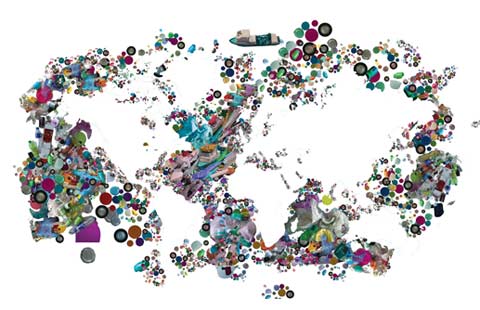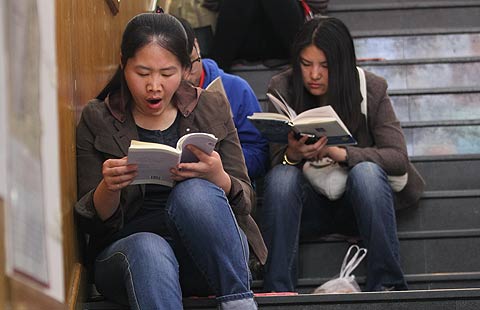US shows its true colors
Updated: 2014-04-29 07:53
(China Daily)
|
|||||||||||
Just as many have observed, united States President Barack Obama's Asia visit is essentially about Washington's and its allies' unease about a rising China.
From Tokyo to Manila, Obama has tried to pick his words so as not to antagonize Beijing. But from the US-Japan joint statement to the new US-Philippines defense agreement, it is increasingly obvious that Washington is taking Beijing as an opponent. With Obama reassuring the US' allies of protection in any conflict with China, it is now clear that Washington is no longer bothering to conceal its attempt to contain China's influence in the region. It is even less convincing to say the US pivot to the Asia-Pacific is not targeted against China.
Obama's rhetoric about peace and international law sounds hollow because it contradicts what Washington and himself have been up to. The US-Japan statement, for instance, is a dangerous license for the increasingly rightist Japanese Prime Minister Shinzo Abe to provoke more trouble. Its shameless disregard of historical facts and endorsement of Abe's rightist inclinations will only cause further instability.
For a considerably long period, Chinese have cherished the naive thought that Washington will rein in its unruly allies when they go too far.
Obama's current trip should be a wake-up call that this is just wishful thinking. His sweet promises of a new type of major-country relationship should not blind us to the grim geopolitical reality: Ganging up with its troublemaking allies, the US is presenting itself as a security threat to China.
The foremost threat is not the disputes that estrange China from its neighbors such as Japan and the Philippines. It is rather the threatening image of China that is being projected and marketed by these malicious neighbors and their backstage supporter.
Washington's biased portrayal of China and its legitimate territorial claims is conducive to the US' pivot and stronger bonds with its allies. But if the US wants to benefit from the thriving Asia-Pacific, it should promote good-neighborliness.
The further prosperity of the region calls for closer intra-regional connectivity, to which the current tensions are a threat. Washington should try to ease those tensions, instead of fanning them.
Most important of all, Washington must come to terms with the reality that China will continue to grow, though it will not follow the US' hegemonic path.
Washington's best bet lies in collaborating with, not standing against, Beijing before it is too late.
Related Stories
Abe's Yasukuni offering a slap in Obama's face 2014-04-21 14:48
Obama warns Russia of new sanctions 2014-04-18 15:35
S. Korea, Japan begin talks on comfort women before Obama visit 2014-04-16 16:39
Obama, Putin trade barbs in phone call over Ukraine 2014-04-15 09:53
Today's Top News
Russia assures US it won't invade Ukraine: Pentagon
US imposes new sanctions on Russia
40 people held in Ukraine amid pro-Russia protests
Bill Gates urges more in China to help poor
US TV series ordered off popular video sites
HK protests a disturbing trend
PM resigns over ferry disaster
Patent process needs update
Hot Topics
Lunar probe , China growth forecasts, Emission rules get tougher, China seen through 'colored lens', International board,
Editor's Picks

|

|

|

|

|

|





